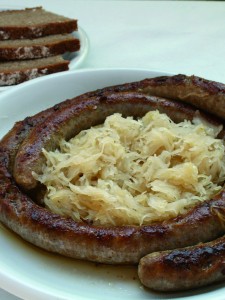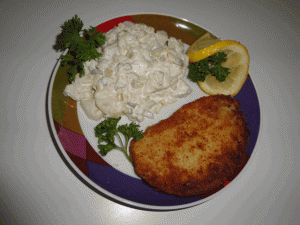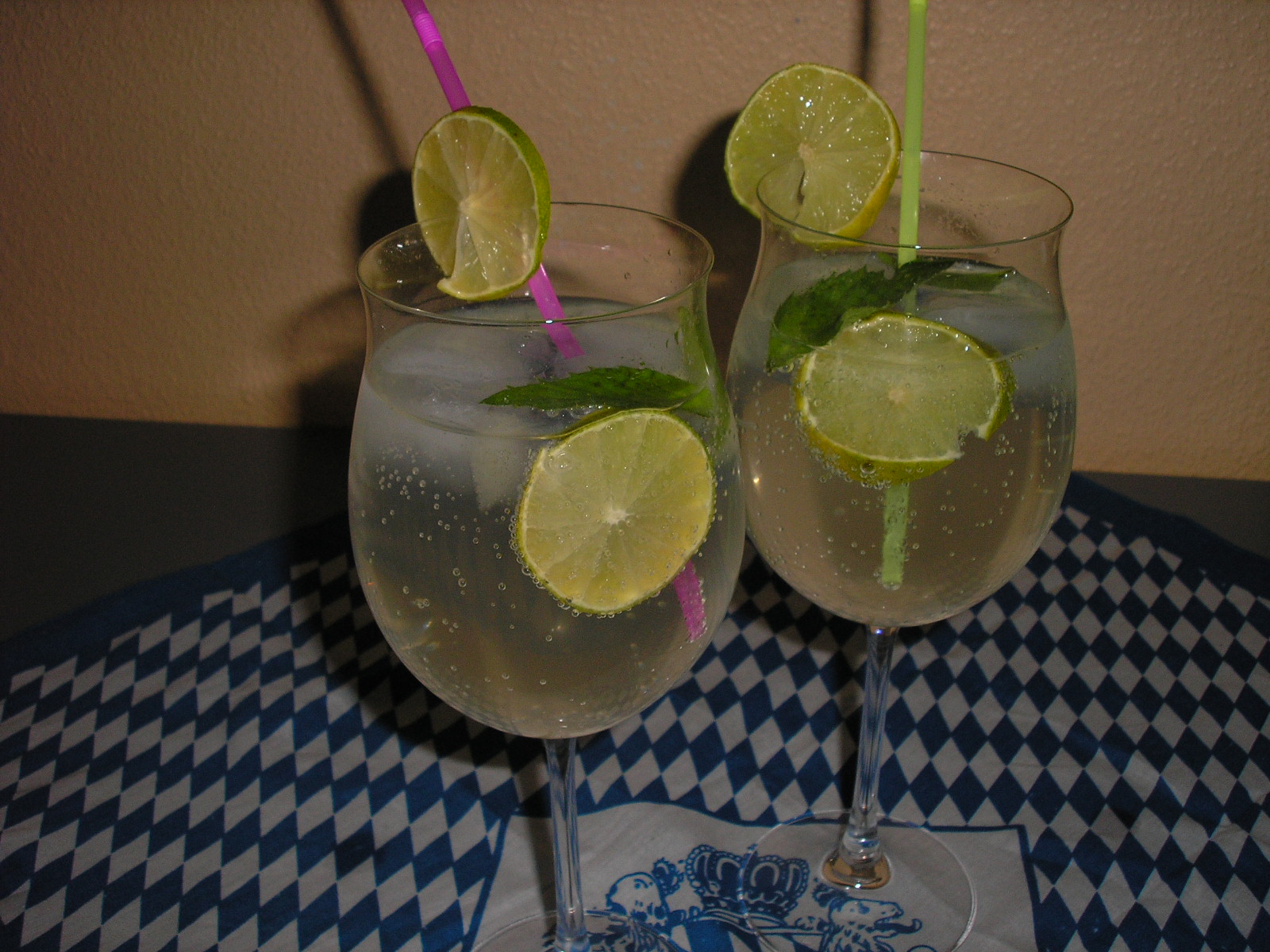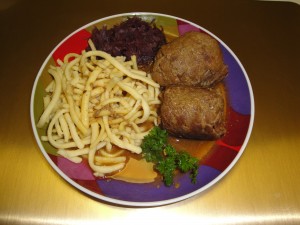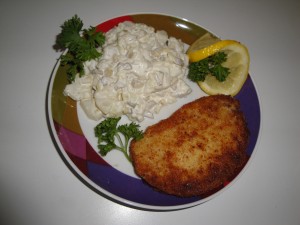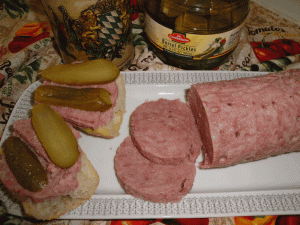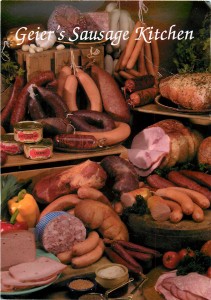 Wurst is German for what we label separately as Sausages and Lunchmeat/Luncheon Meats. We have the famous Bratwurst, the Knockwurst (spelled Knackwurst in German), Leberwurst (liver sausage), Fleischwurst (bologna) and among many others the category of Hartwurst (salami). Most whole meat products such as hams, corned beef and turkey breasts fall here into the category of luncheon meats but are not considered “Wurst”.
Wurst is German for what we label separately as Sausages and Lunchmeat/Luncheon Meats. We have the famous Bratwurst, the Knockwurst (spelled Knackwurst in German), Leberwurst (liver sausage), Fleischwurst (bologna) and among many others the category of Hartwurst (salami). Most whole meat products such as hams, corned beef and turkey breasts fall here into the category of luncheon meats but are not considered “Wurst”.
How do we define “Wurst”? Meat chopped, ground or cut up, mixed with salt, spices and other ingredients, shaped and finished for your consumption. (Chopped in this case is very fine, like bologna, which is processed in a “chopper”)
The Bratwurst falls, with all the other fresh sausages, into the “Fresh Sausage” category, which includes any sausage which you buy uncooked from your meat store. Breakfast links, fresh Italian, fresh Polish, any type of fresh Brats, also fresh Chorizo and any other ethnic sausage, which you should cook before eating, are part of this category.
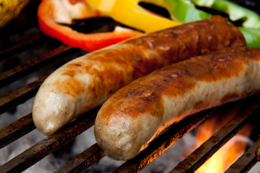
Picture courtesy of Geier’s Sausage Kitchen
Cooked Sausages, I would consider the most famous here to be the Weisswurst. Many of the fresh sausages listed above are nowadays precooked for longer shelf life. You also would add the liver sausages and blood sausages including Kiska to this category.
Smoked Sausages include the Knockwurst and smoked Polish Kielbasa, also Salami sticks or Hunter sausages, Landjaegers, Cajun Andouille and all other “wurst” which is smoked and in sausage form.
Luncheon meats come stuffed into casings, baked in a loaf form or just shaped.
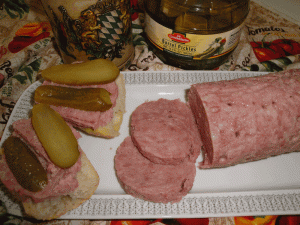 Bologna, Krakowska, Lyoner Bologna, New York Ham are just a few examples of the wide variety of luncheon meats in casings, which cater to almost every taste.
Bologna, Krakowska, Lyoner Bologna, New York Ham are just a few examples of the wide variety of luncheon meats in casings, which cater to almost every taste.
There is a large variety of “Loaves” like the Veal Loaf, Pepper Loaf, Olive Loaf, Pizza Loaf and again here they add mushrooms for a mushroom loaf or cherries or nuts. In my travels I have experienced quite a few add-ins which tasted good, some I would not touch and others that you have to have an acquired taste for or you had to grow up with it.
The last category I can think of would be the Salamis. Here the main goal is to preserve meat over a long period of time by reducing the moisture content so that they can be stored without refrigeration. Hartwurst (hard sausage) would be the German term here and this describes the consistency of these sausages very well.
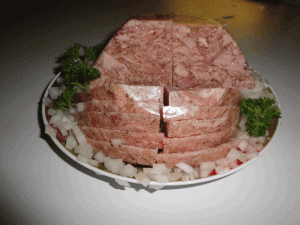 It probably is my duty here to at least mention Head Cheese and Haggis. As for a type of head cheese we published a Suelze/Souse recipe which is made without head and cheese and conforms to the high standards of what my wife will eat and in my and my friends opinion can compete with any quality test ever given. As for Haggis my personal advise would be: “Eat at your own Risk!”
It probably is my duty here to at least mention Head Cheese and Haggis. As for a type of head cheese we published a Suelze/Souse recipe which is made without head and cheese and conforms to the high standards of what my wife will eat and in my and my friends opinion can compete with any quality test ever given. As for Haggis my personal advise would be: “Eat at your own Risk!”
As the most common ingredient used to be salted pork and the sausages and luncheon meats were all meat it is hard for me to get used to all the other meats like turkey, chicken and even fish being used in the production nowadays. That bygone time was also when sausages tasted the way they were supposed to and not like a sausage shaped lollipop with all the high fructose corn sweeteners and dextrose fillers in them now.
This is only a short list of the different “Wursts” you will encounter in your butcher shop.
By the way, did you know, that jokes about German sausages are the Wurst?

